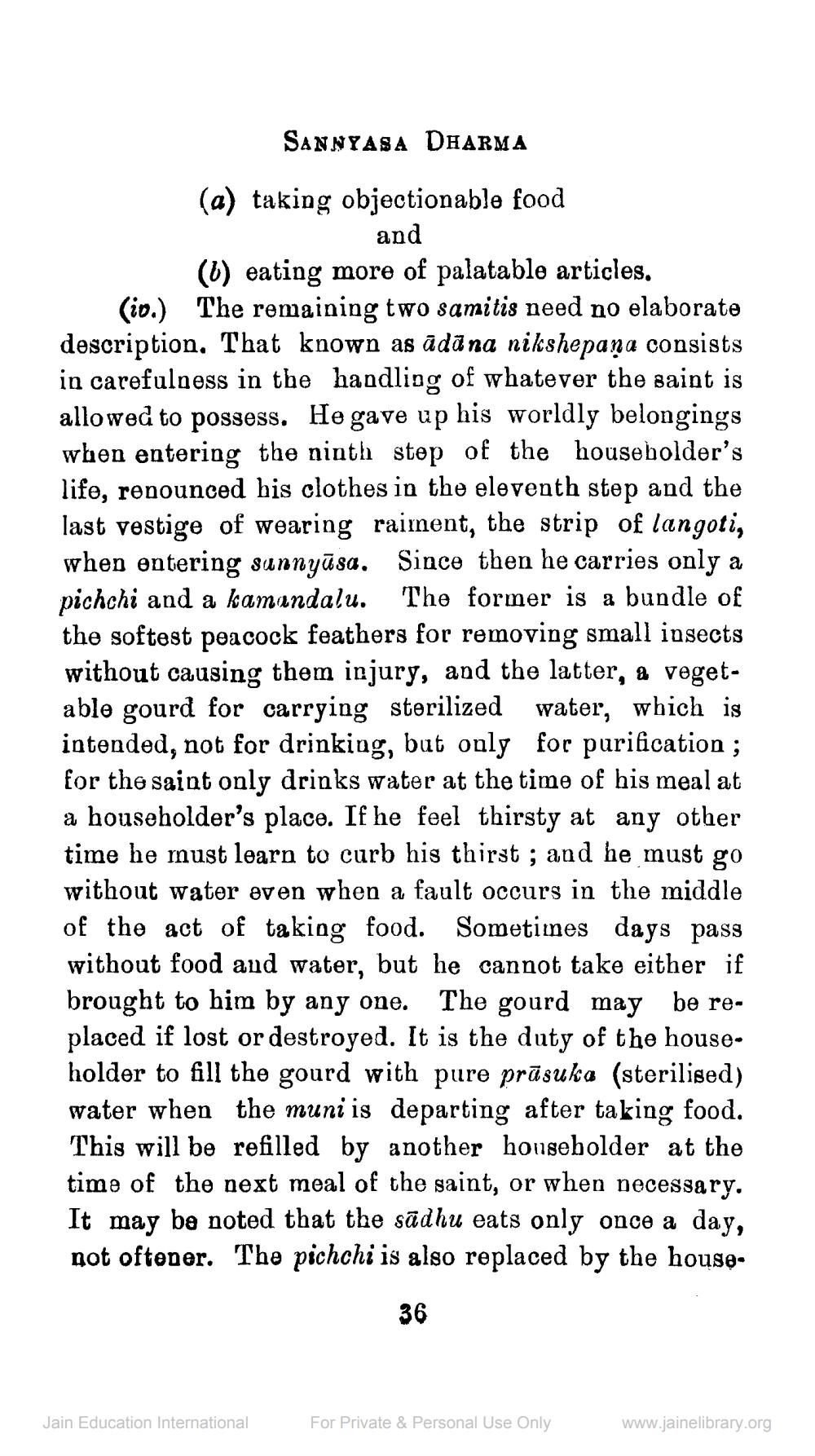________________
SANNYASA DHARMA
(a) taking objectionable food
and (6) eating more of palatable articles. (in.) The remaining two samitis need no elaborate description. That known as ādūna nikshepana consists in carefulness in the handliog of whatever the saint is allowed to possess. He gave up his worldly belongings when entering the ninth step of the householder's life, renounced his clothes in the eleventh step and the last vestige of wearing raiment, the strip of langoti, when entering sunnyūsa. Since then he carries only a pichchi and a kamındalı. The former is a bundle of the softest peacock feathers for removing small insects without causing them injury, and the latter, a vegetable gourd for carrying sterilized water, which is intended, not for drinking, but only for purification ; for the saint only drinks water at the time of his meal at a householder's place. If he feel thirsty at any other time he must learn to curb his thirst; and he must go without water even when a fault occurs in the middle of the act of taking food. Sometimes days pass without food and water, but he cannot take either if brought to him by any one. The gourd may be replaced if lost or destroyed. It is the duty of the householder to fill the gourd with pure prāsuka (sterilised) water when the muni is departing after taking food. This will be refilled by another householder at the time of the next meal of the saint, or when necessary. It may be noted that the sādhu eats only once a day, not oftener. The pichchi is also replaced by the house
Jain Education International
For Private & Personal Use Only
www.jainelibrary.org




